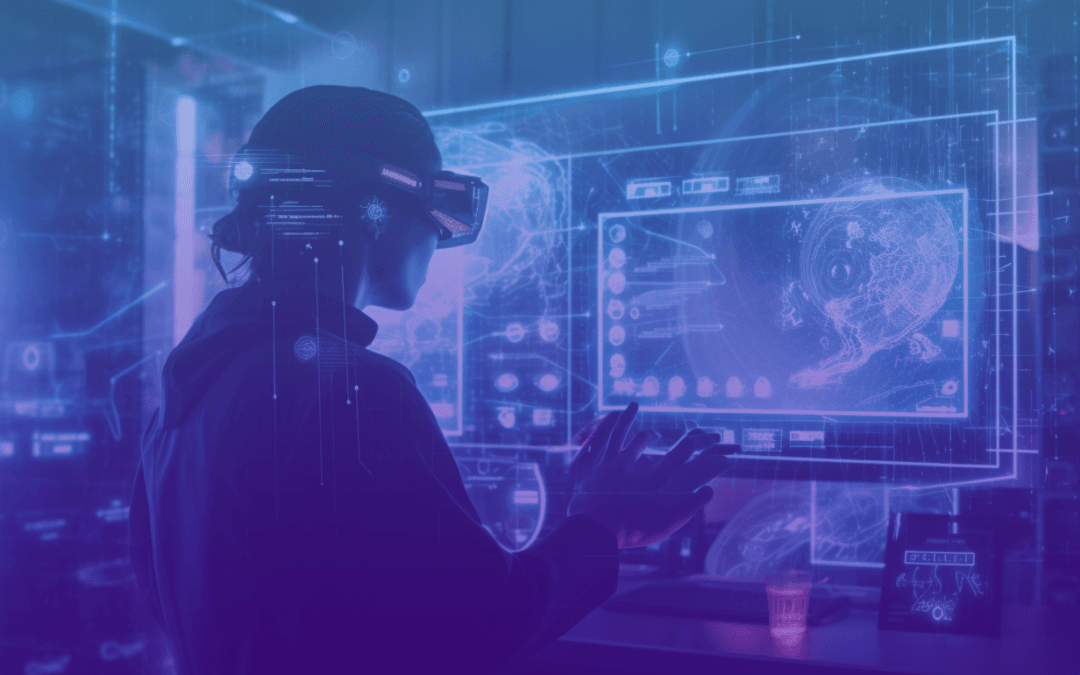As the digital landscape continues to evolve rapidly, web development is at the forefront of technological advancements and innovation. Staying up-to-date with emerging technologies and their potential impact on your business is essential for maintaining a competitive edge and driving long-term success. In this comprehensive guide, we’ll explore the future of web development, focusing on the latest technologies and trends that are set to shape the industry and transform the way businesses interact with the online world.
Artificial Intelligence (AI) and Machine Learning
Artificial Intelligence and Machine Learning are revolutionizing various industries, and web development is no exception. These technologies offer unprecedented opportunities to streamline workflows, enhance user experiences, and optimize web performance. Some potential applications include:
- AI-powered chatbots and virtual assistants, providing real-time customer support and personalized interactions.
- Machine learning algorithms for content recommendations, improving user engagement and increasing conversion rates.
- AI-driven analytics and insights, enabling businesses to make data-driven decisions and optimize their web strategies.
Progressive Web Apps (PWAs)
Progressive Web Apps combine the best features of web and mobile applications, offering a seamless and user-friendly experience across multiple devices. PWAs are gaining popularity due to their ability to work offline, provide fast loading times, and support push notifications. Key benefits of PWAs include:
- Improved user engagement, as PWAs can be easily accessed through a web browser or installed on a user’s device, bypassing the need for app stores.
- Enhanced performance, with faster load times and smoother navigation, even in low-connectivity scenarios.
- Streamlined development and maintenance, as PWAs leverage a single codebase for multiple platforms, reducing the need for separate development and updates for web and mobile apps.
WebAssembly
WebAssembly is a low-level binary code format designed to run alongside JavaScript, enabling developers to write high-performance web applications with languages like C, C++, and Rust. This technology offers significant performance improvements over JavaScript for computationally intensive tasks and has the potential to revolutionize web development by:
- Expanding the range of applications that can be efficiently executed on the web, such as graphics-intensive games, video editing tools, and virtual reality experiences.
- Enhancing the security and reliability of web applications, as WebAssembly code is sandboxed and runs within a protected environment.
- Facilitating the integration of existing codebases and libraries, allowing developers to leverage their expertise in multiple programming languages for web development.
Voice User Interfaces and Conversational AI
As voice assistants like Amazon’s Alexa, Google Assistant, and Apple’s Siri continue to gain traction, Voice User Interfaces (VUIs) and Conversational AI are set to become increasingly important in the web development landscape. These technologies enable users to interact with websites and applications using voice commands, offering a more intuitive and accessible experience. Potential applications and benefits include:
- Improved accessibility, particularly for users with visual impairments or physical disabilities that limit their ability to interact with traditional user interfaces.
- Enhanced user engagement, as voice interactions can be more convenient and natural than typing or clicking.
- Opportunities for innovation and differentiation, as businesses can develop unique voice-driven experiences that set them apart from their competitors.
The Internet of Things (IoT) and Web Integration
The Internet of Things refers to the growing network of interconnected devices and sensors that collect and exchange data, transforming the way we interact with the physical world. As IoT technology advances, web development will play a crucial role in integrating these devices and creating seamless, data-driven experiences. Some potential applications and benefits include:
- Real-time data visualization and monitoring, enabling businesses to track key metrics, optimize processes, and make informed decisions.
- Enhanced user experiences, as websites and applications can leverage IoT data to provide personalized and context-aware interactions.
- New business models and opportunities, as IoT integration enables the development of innovative products, services, and experiences that were previously not possible.
Work With Me!
Schedule a consultation to discuss your project goals, and how I can help bring your ideas to life.
Augmented Reality (AR) and Virtual Reality (VR)
Augmented Reality and Virtual Reality are poised to have a significant impact on the future of web development, offering immersive and interactive experiences that transcend traditional web browsing. As AR and VR technologies become more accessible and affordable, web developers will need to adapt and incorporate these experiences into their projects. Potential applications and benefits include:
- Enhanced online shopping experiences, with AR-powered product visualization that allows users to see how items would look in their environment before making a purchase.
- Immersive virtual tours and experiences, enabling users to explore locations, venues, and events remotely through VR-enabled websites and applications.
- Educational and training platforms, leveraging AR and VR technologies to provide engaging and interactive learning experiences.
Serverless Architecture and Microservices
Serverless architecture and microservices are changing the way web applications are built and deployed, offering a more modular and scalable approach to web development. These technologies enable developers to break down complex applications into smaller, independent components that can be developed, deployed, and maintained separately. Key benefits of serverless architecture and microservices include:
- Enhanced scalability, as individual components can be scaled independently based on demand, without impacting the entire application.
- Improved flexibility and agility, as developers can make updates and improvements to specific components without the need for a full-scale application release.
- Cost savings, as serverless architecture allows businesses to pay only for the compute resources they actually use, rather than pre-allocating resources based on projected demand.
Conclusion
The future of web development is brimming with exciting new technologies and trends that have the potential to transform the way businesses interact with the online world. By staying informed about these advancements and embracing the opportunities they present, businesses can capitalize on emerging technologies to create innovative, engaging, and future-proof web experiences. Whether it’s leveraging AI and machine learning to optimize user interactions, adopting PWAs for a seamless cross-platform experience, or integrating IoT devices for data-driven insights, the future of web development promises to be a thrilling and dynamic journey for businesses and developers alike.
More of My Recent Posts
See My Digital Alchemy in Action!


